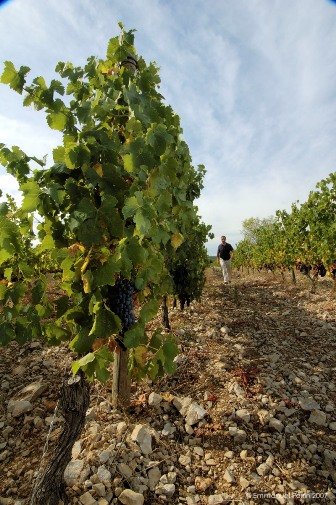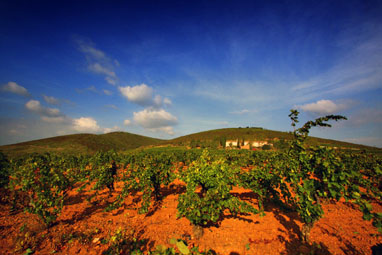
photo courtesy http://www.languedoc-wine.com
It’s no great secret that I adore rosé wines in all their many incarnations, so when I was asked if I’d like to participate in this year’s #Languedoc Day by reflecting on a few samples, it only took a moment for me to accept.
Rosé has become somewhat synonymous with the region of Provence and understandably so – they have been producing softly hued pink wines for well over 2000 years. However their neighbor, the Languedoc, is making delicious and overt advances on their territory and the wine-loving public, are the beneficiaries.
Located in the south-western part of France, the Languedoc is the largest wine-producing region in the country. Bordered by the Mediterranean and stretching from the Rhône Valley in the north-east to the Roussillon region in the south, it’s wild, windy, mountainous terrain hosts a wide range of soil types and climates, equating to a patchwork of distinctive terroirs.
Most of the output is red, with a focus on Carignan, Grenache Noir, Syrah, and Mourvèdre but Rosé production is on the rise, both in numbers and in quality.
 2016 Château Lascaux ‘Garrigue’ Rosé, AOC Languedoc (SRP $17.00)
2016 Château Lascaux ‘Garrigue’ Rosé, AOC Languedoc (SRP $17.00)
The region of Pic St, Loup is found north of the city of Montpellier, sheltered from the, often ferocious, Tramontane and Mistral winds by the Cévennes mountains. The 45 acres of organic vineyards belonging to Château Lascaux, are located in the northerly reaches of the AOC, nestled between pine forests and swaths of wild ‘garrigue’ – the scrubby resinous herbs that flourish on the inhospitable limestone soils.
The Chateau’s name, Lascaux, is derived from a type of limestone found on the property which has been in the Cavalier family for thirteen generations.

photo courtesy Château Lascaux
A blend of 40% Cinsault and 30% each Syrah and Grenache, the wine has an appealing pale melon hue, but with the first sniff, it’s all red fruits – strawberry, red currant and mellow cherry. Juicy melon, peach, and raspberry round out the palate with wafts of aromatic thyme and bay leaf. ‘Garrigue’ is a fitting name.

photo courtesy http://www.KermitLynch.com
2016 Domaine de Fontsainte ‘Gris de Gris’ Rose, AOC Corbières (SRP $14.95)
Corbières is the largest appellation in the Languedoc and the fourth largest in France. Named after the rugged limestone hills that overlook the ancient terrain (rock specimens over 500 million years old have been found), this is a dynamic and diverse region.

image courtesy of http://www.fontsainte.com
On the road from Narbonne to Carcassonne, near the town of Boutenac, you’ll find the vineyards of Domaine de Fontsainte. This sunny area, now known as the ‘Golden Crescent’, was highly favored by the Romans and it’s not unusual for vineyard workers to come across ancient coins and other artifacts. The original Domaine evolved around a thermal spring which was, in the 12th century, named after a saint – hence the name Fontsainte or Saint’s Fount. The vines, which are sustainably grown on soils of silica, clay, and limestone, are protected from the winds by a vast, 500 ha/1,235 acre pine forest that, according to the proprietor Bruno Laboucari, contribute to the special character of the wines:
“Early morning, in the summer, there is an aroma in the humid air, warming the vineyard, of pine resin and pollen, citrus in flower, rosemary, thyme, spicy garriuge heath and woodland undergrowth. That’s the indescribable flavor that makes our wines special.”

Garrigue refers to the many wild, resinous herbs (thyme, rosemary, bay, fennel and more) that grow on limesone.
Another discerning factor is the dominant grape variety used in the ‘Gris de Gris’ – Grenache Gris, which makes up 50% of the blend A cousin to Grenache Noir and Grenache Blanc, the less familiar ‘Gris’ or ‘grey’ shares the same DNA. It produces wines with distinctive minerality and flavors of honey, almonds, and stone fruits
The blend is rounded out with 20% each Grenache Noir and Carignan plus 5% of both Cinsault and Mourvèdre.

photo courtesy www,fontsainte.com
This rosé is produced using a technique known as ‘saignée’ in which the grapes are crushed and left to macerate for anywhere from 6 to 24 hours. Once the desired color is achieved, they ‘bleed’ (the English definition of ‘saignée) or remove some of the juice to a separate tank where fermentation will take place. One of the virtues of this method is that you can produce both a rosé and, from the juice and skins left in the original vat, a red wine as well.
Rosé appears in a multitude of shades and this 2016 vintage shows peachy melon hues with intriguing tinges of lavender mauve on the rim. The aromas evoke summer memories of fleshy strawberries and ripe peach, with exotic notes of tangerine and pineapple. Berries dominate the finish, especially red raspberry, with sensual touches of orange oil. This is a ‘tricksy’ little wine, offering up both refreshment and lushness, making it altogether seductive and delicious.

photo courtesy of http://www.languedoc-wines,com
The Languedoc is a region to watch. Full of creativity and the desire to prove its worth, it continues to surprise and delight, tempting with undiscovered treasures at beguiling prices.
The writer was provided with wine samples for review but the descriptions and are her own.
